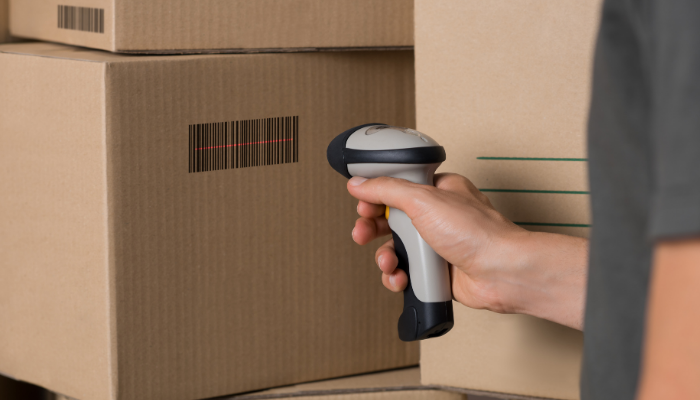If you thought barcodes were just for shops, think again. We are seeing a big shift in the way manufacturers and distributors use barcoding to improve warehouse operations to track stock. Barcoding is one of the best ways to improve quality control in any distribution business. If your company is not using barcoding to track stock, here are three reasons why you should – to control stock levels, stock location and stock movement. Possibly the three key aspects of warehousing, but you’d be surprised how much more efficient your warehouse could be by implementing barcoding.
What is in stock? Knowing exact stock levels
When a customer places an order, they trust your business will deliver and follow through. How many times have you promised to deliver an order, only to find there is no stock available? Nobody wants to make that embarrassing call back. When a customer is relying on your stock and you cannot supply it, they’ll look for another supplier.
The other extreme is over-ordering stock, trying to compensate for past order mistakes. This can also be detrimental to your business, as stock can quickly become out of date, creating waste and lost income.
If you know exactly what is in stock, with the ability to quickly check stock levels via an automated system, you can confidently deliver to your customers, creating a reliable relationship with your clients.
Where is it? Knowing the exact location of stock
Misplacing stock or having stock not in the right location can slow down orders and deliveries, impacting your workflow and your customer orders. In addition, manually searching for stock wastes staff time and takes staff away from their regular duties, impacting productivity.
Barcoding is not only for stock. Warehouse sections, racking and even pallets and storage containers can be barcoded to make retrieval of stock for orders faster and more accurate.
In transit – Knowing when your stock is on the move
Sadly, one of the realities of warehousing and stock orders is theft. This can be internal from disgruntled staff or external from delivery drivers taking a little extra for their own distribution. Whatever the reasons behind stock theft, it has an impact on the business’s bottom line and this is a reality that manufacturers and distributors have to face.
Using barcoding means you can track staff and deliverers movement of stock. You can trace who moved the stock and when it was moved. It also ensures safe stock handling and pinpoints theft, if this is an issue.
Stock control in the food industry is a liability for your business. Unless the stock levels are efficiently turned over and produce income, they can become a large financial burden for the business.
How can Acacia help you?
If you’re a manufacturing or distribution business, with out-of-date systems in your warehouse facilities, implementing an automated and traceable barcode system will improve your business tenfold. Your barcode system should include integrated scanning systems that talk to all your other existing automated systems within the business. This communication, between multiple automated systems, is the key to maximising revenue and minimising costs and waste.
The integration of a barcoding system needs to be compatible with your financial, ordering, transportation and picking systems. It is crucial that this integration is undertaken, designed and implemented by experienced and knowledgeable experts. The cost of trying to do it yourself will cost your business more in the long run.
At Acacia, we are industry leaders in helping manufacturers and distributors overcome issues, rebound and become more profitable. We help optimise, automate and improve the traceability of your business. With Acacia, you know your business is working with the best in the industry. Acacia has the knowledge and experience across any food manufacturer or distributor business to provide the most cost-effective solution for your business.
If you are interested in talking through the options for your business to benefit from updating your inventory tracking system contact us to find out more.


